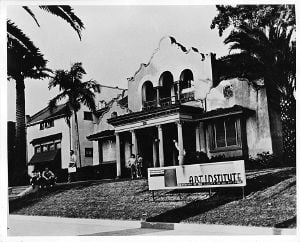Otis, Harrison Gray
(Started) |
|||
| Line 1: | Line 1: | ||
| − | {{Claimed}} | + | {{Claimed}}{{Started}} |
[[Category:Media Professionals]] | [[Category:Media Professionals]] | ||
{{epname|Otis, Harrison Gray}} | {{epname|Otis, Harrison Gray}} | ||
Revision as of 14:49, 6 October 2007
- This article is about the publisher and soldier. For the United States Representative and Senator from Massachusetts, see: Harrison Gray Otis (lawyer).
Harrison Gray Otis (10 February 1837 – July 30, 1917) was the second publisher of the Los Angeles Times.
Born in Ohio, he was part of the Republican National Convention that nominated Abraham Lincoln for president. He volunteered for the Union army during the American Civil War and fought in William McKinley's regiment, the 23rd Ohio Infantry. After the war, he worked as a publisher before moving to California.
He worked for smaller newspapers before becoming affiliated with the Times. He wrote editorials and local news before buying a half interest in the paper. He then named himself president and editor-in-chief.
When the Spanish-American War broke out in 1898, Otis asked his former commander William McKinley, now the commander-in-chief, for an appointment as Assistant Secretary of War. Secretary of War Russell A. Alger did not want the conservative Otis serving under him however. Instead, Otis volunteered for the army once again and was appointed brigadier general of volunteers. He served in the Philippines. He did not see any action against the Spanish, but commanded the 1st Brigade, 2nd Division, VIII Corps during the Philippine-American War.
After the war, he returned to his position at the Times. His support for Los Angeles, California, was instrumental in the growth of the city. He was a member of the San Fernando Syndicate, a group of investors who bought land in the San Fernando Valley based on inside knowledge that the Los Angeles aqueduct would soon irrigate it. Otis used the Times to frighten citizens (with news stories of a false drought) to vote for a 1905 bond issue that funded the aqueduct.
His home was one of three buildings that were targeted in the 1910 Los Angeles Times bombing.
Otis was known for his right wing political views, which were reflected in the paper.
He was succeeded as publisher of the Los Angeles Times by Harry Chandler, the husband of his daughter, Marian Otis Chandler.
Otis College of Art and Design
Otis College of Art and Design is an art and design college located in Los Angeles, California. It is generally referred to as Otis.
The school's programs, accredited by WASC and National Association of Schools of Art and Design, include four-year degrees in the typical art school fare: illustration, fine arts, graphic design, architecture, landscape design, interior design, and fashion design as well as newer fields such as digital media, toy design, and interactive product design. It also offers MFA degrees in fine arts and writing. Undergraduate students choose a major in their second year, after completing a battery of traditional drawing, painting, composition, and construction classes in their first or "Foundation" year. In addition to studio work, standard liberal arts courses are required, although traditional history courses are replaced by art history.
Otis began in 1918, when Los Angeles Times founder Harrison Gray Otis bequeathed his MacArthur Park property to start the first public, independent professional school of art in Southern California. The main campus, located in the Westchester, Los Angeles, California, close to the Los Angeles International Airport, is anchored by the 1963 IBM building (famous for its computer "punchcard" style windows) and a contemporary fine arts facility.
Otis has been long considered one of the major art institutions in California. It is considered among the top ten nationwide, often falling somewhere in the top five. [1] Its fashion design program, with a separate campus in the California Market Center in downtown Los Angeles, is considered one of the top four fashion institutions in the world and the top fashion institution on the West Coast. The school was originally named Otis Art Institute. From 1978 until 1991, it was affiliated with New York's Parsons School of Design and known as Otis-Parsons (full name: Otis Art Institute of Parsons School of Design). This affiliation allowed students to spend a semester or more at the Parsons schools in New York and Paris. In 1991, it became independent and known as Otis College of Art and Design. Today it is the most culturally diverse school of art and design in the country. Its 1100 students, from 39 states and 26 countries, mirror the world as well as the emerging work place.
External links
- Harrison Gray Otis and his Times
- Major-General Harrison Gray Otis, U.S.V.
- Otis College of Art and Design website
Credits
New World Encyclopedia writers and editors rewrote and completed the Wikipedia article in accordance with New World Encyclopedia standards. This article abides by terms of the Creative Commons CC-by-sa 3.0 License (CC-by-sa), which may be used and disseminated with proper attribution. Credit is due under the terms of this license that can reference both the New World Encyclopedia contributors and the selfless volunteer contributors of the Wikimedia Foundation. To cite this article click here for a list of acceptable citing formats.The history of earlier contributions by wikipedians is accessible to researchers here:
The history of this article since it was imported to New World Encyclopedia:
Note: Some restrictions may apply to use of individual images which are separately licensed.
